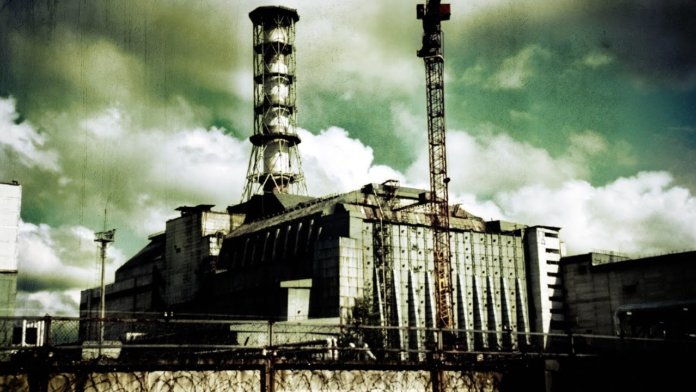For many, radiation is an invisible killer from which you need to stay as far away as possible. But there are people who rush to radioactive places for the thrill. And there are those who make good money by offering the daredevils tours to the sites of nuclear tests, zones of radioactive contamination, etc.
We present to you the top 10 most popular places for radioactive tourism.
10. Mary Kathleen Uranium Mine, Australia
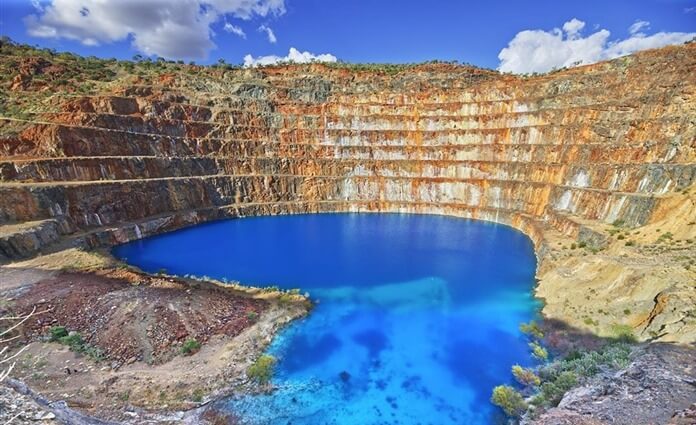 Mary Kathleen is a ghost town halfway between Mount Isa and Cloncurry. It was built to serve a uranium mine that existed from the 1950s to the 1980s.
Mary Kathleen is a ghost town halfway between Mount Isa and Cloncurry. It was built to serve a uranium mine that existed from the 1950s to the 1980s.
At the end of 1982, the mine was depleted and closed. Over the 12 years of its operation, 31 million tons of material were mined, including 7 million tons of ore.
The remains of a processing plant are still preserved at the mine and. Today, the Mary Kathleen mine resembles a swimming pool, the water of which is painted in a spectacular blue due to minor radioactivity and the leaching of minerals from the walls of the mine.
Swimming in this blue broth made of chemicals is prohibited, but some brave tourists do it at their own peril and risk, so that later they can boast of swimming in one of the the most toxic water bodies on the planet.
9. Territory near the nuclear power plant Fukushima-1, Japan
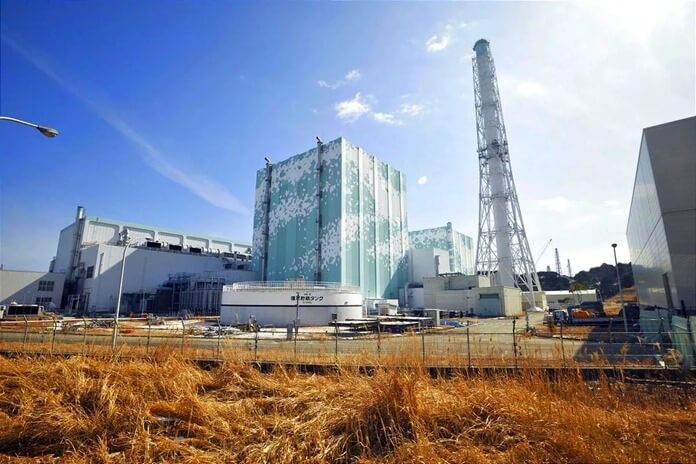 Eight years after the earthquake, tsunami and one of the worst nuclear disasters in history, Japan's Fukushima Prefecture is gradually recovering. Radiation levels in the prefecture's capital are comparable to those in places like Hong Kong and London, observers said.
Eight years after the earthquake, tsunami and one of the worst nuclear disasters in history, Japan's Fukushima Prefecture is gradually recovering. Radiation levels in the prefecture's capital are comparable to those in places like Hong Kong and London, observers said.
However, about 3 percent of the prefecture is officially closed and abandoned by all residents. But they are a desirable place to visit for extreme tourists, who are not afraid of the fact that in some places the radiation background can reach 400 μR / h.
8. Tour of the nuclear test site, Australia
 It is unlikely that you often met the mention of Moraling in the media. The site, located in South Australia, served as a nuclear test site for the British military in 1955-1963.
It is unlikely that you often met the mention of Moraling in the media. The site, located in South Australia, served as a nuclear test site for the British military in 1955-1963.
As a result, the area was contaminated with radioactive materials, on the fight against which the Australian government spent $ 108 million. Moreover, she paid compensation in the amount of $ 13.5 million to the local tribe Trarutja. And although living in a radioactive area, even with a lot of money, is not a prospect, the trjarutja were able to make "lemonade from lemon" and Moralinga became one of the most visited routes of radioactive tourism.
Tourists are offered a bus tour of an abandoned military settlement, a British airfield and places where nuclear explosions took place. However, there is a closed area on this test site that will be radioactively dangerous for 25 thousand years.
7. Semipalatinsk test site, Russia
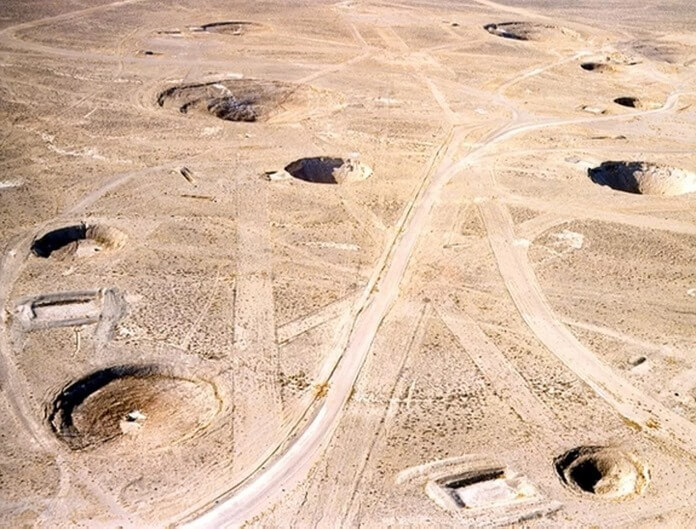 Our country also has something to show "radioactive tourists".Of course, such excursions are expensive, but the impressions will last a lifetime.
Our country also has something to show "radioactive tourists".Of course, such excursions are expensive, but the impressions will last a lifetime.
On August 29, 1949, the first nuclear weapon test in the USSR was carried out at the Semipalatinsk test site. The detonated power of the RDS-1 bomb was 22 kilotons. Now at the site of the explosion there is a small reservoir - "atomic lake".
In 1991, the landfill was closed and turned into one of the popular tourist attractions. All excursions are conducted by transport, accompanied by a dosimetrist, and tourists must wear masks and shoe covers and not lift anything from the ground.
6. Polygon Alamogordo, USA
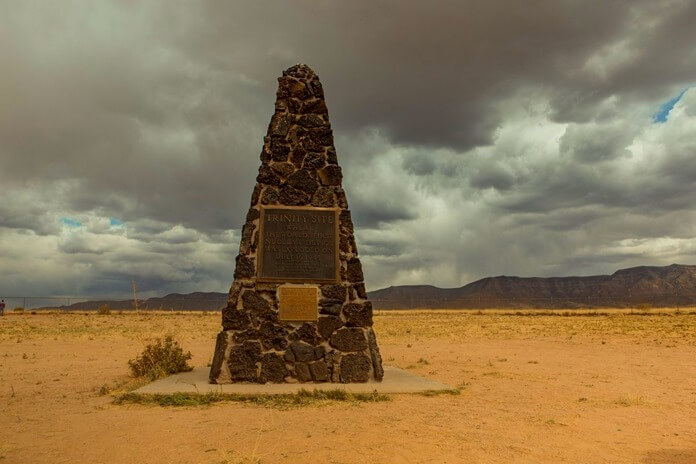 At this test site, on July 16, 1945, the first nuclear device in the world was successfully tested. The force of the explosion of the bomb, codenamed "Trinity", was about 20 thousand tons. And the United States received a formidable weapon, which was soon used to deliver nuclear strikes on the Japanese cities of Hiroshima and Nagasaki.
At this test site, on July 16, 1945, the first nuclear device in the world was successfully tested. The force of the explosion of the bomb, codenamed "Trinity", was about 20 thousand tons. And the United States received a formidable weapon, which was soon used to deliver nuclear strikes on the Japanese cities of Hiroshima and Nagasaki.
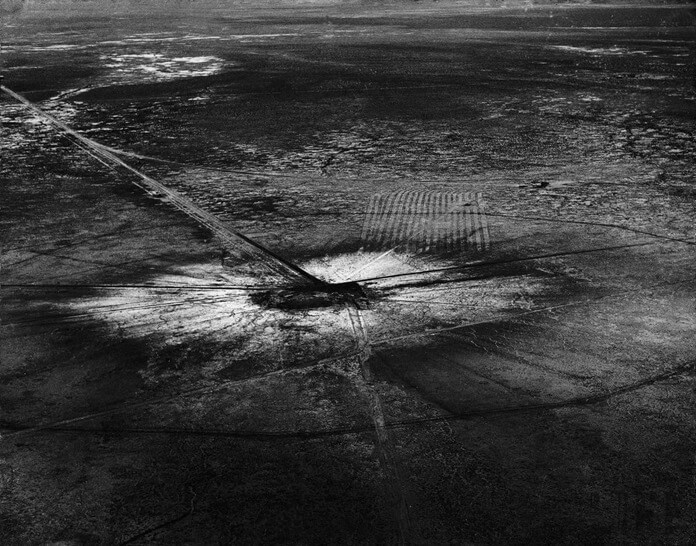 Those wishing to join the birth of the Atomic Age can visit the test site on October 1 and April 1 as part of an excursion group. At the epicenter can be seen green trinitite - a mineral created by a bomb explosion.
Those wishing to join the birth of the Atomic Age can visit the test site on October 1 and April 1 as part of an excursion group. At the epicenter can be seen green trinitite - a mineral created by a bomb explosion.
5. Yanjiang, China
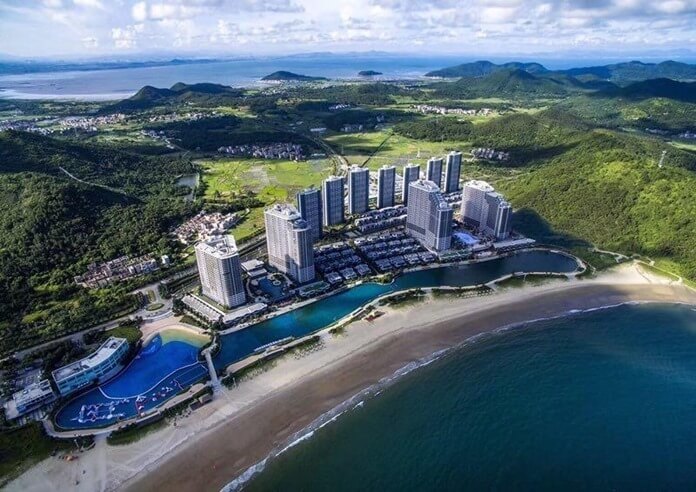 No nuclear tests were carried out in this area. Yanjiang's radioactivity is associated with deposits of monazite, a mineral that contains thorium and radium. On the hills that contain monazite, building sand was mined for many years, which was used to create bricks.
No nuclear tests were carried out in this area. Yanjiang's radioactivity is associated with deposits of monazite, a mineral that contains thorium and radium. On the hills that contain monazite, building sand was mined for many years, which was used to create bricks.
Local residents used these bricks to build their houses, receiving the lion's dose of radiation as a result. Because of this, the proportion of cancer patients in Yanjiang is very high.
4. Sarcophagus of nuclear waste, USA
 Weldon Spring's huge gray embankment is a stark contrast to the green surroundings. Uranium, radium and other radioactive and chemical waste are buried under the embankment.
Weldon Spring's huge gray embankment is a stark contrast to the green surroundings. Uranium, radium and other radioactive and chemical waste are buried under the embankment.
The Weldon Plant, which operated during the Cold War, was owned by the US government and was fundamental to the Manhattan Project and the development of nuclear weapons. Here not only uranium was mined, but also explosives were produced - dinitrotoluene (DNT) and trinitrotoluene (TNT). And now this place has become one of the most popular places for radioactive tourism.
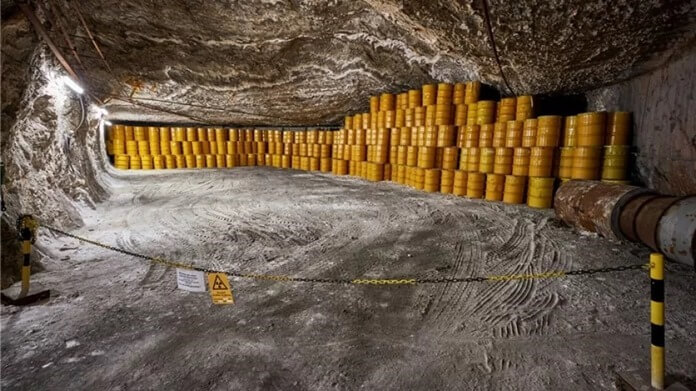 Next to the waste storage facility is a small museum that tells the story of Weldon Spring. For example, that the production of another lethal weapon called "Agent Orange" was planned here. But it didn't come to that, as the Vietnam War came to an end.
Next to the waste storage facility is a small museum that tells the story of Weldon Spring. For example, that the production of another lethal weapon called "Agent Orange" was planned here. But it didn't come to that, as the Vietnam War came to an end.
3. "Healing" radon mines, USA
 The state of Montana is the only place in the United States where underground radon mines can be found. Most of them were dug in the 1920s when miners were looking for gold, silver, and other precious metals.
The state of Montana is the only place in the United States where underground radon mines can be found. Most of them were dug in the 1920s when miners were looking for gold, silver, and other precious metals.
And the Radon Zdorovya mine was founded in 1949 when uranium was found in the hills west of Boulder. Initially, he was engaged in uranium mining, but three years later he retrained for radon therapy. And all thanks to the wife of one of the mine's investors. In 1951, she came to visit her husband and after several visits to the mine noticed that her bursitis had disappeared. This was attributed to the healing properties of radon.
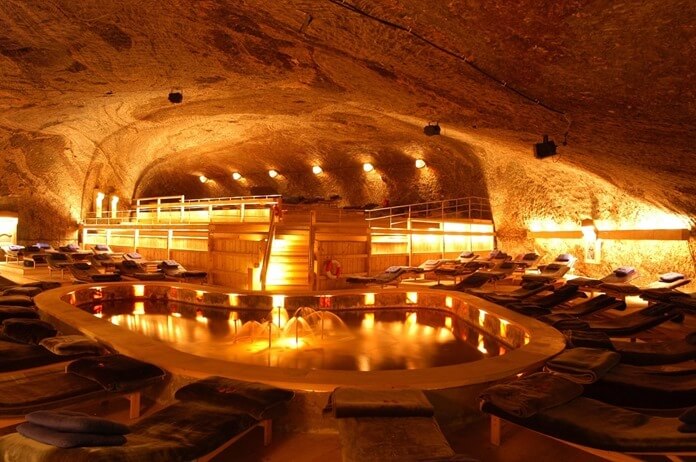 Here we must make a brief reference to what radon is. It is a radioactive gas that is produced by the decomposition of uranium. It has a radiotoxic and carcinogenic effect on the human body, and with prolonged exposure leads to lung cancer. However, even such a harmful gas can serve the benefit of humanity. In medicine, radon is used for radon baths, which have a positive effect on the nervous system at all levels. But this procedure is prescribed only when the benefits of a radon bath exceed the damage from exposure to radon.
Here we must make a brief reference to what radon is. It is a radioactive gas that is produced by the decomposition of uranium. It has a radiotoxic and carcinogenic effect on the human body, and with prolonged exposure leads to lung cancer. However, even such a harmful gas can serve the benefit of humanity. In medicine, radon is used for radon baths, which have a positive effect on the nervous system at all levels. But this procedure is prescribed only when the benefits of a radon bath exceed the damage from exposure to radon.
Sitting among radioactive rocks a few meters underground can seem too risky for your health. But many people around the world disagree.Advocates of radon therapy in Europe, particularly in Germany, Austria and Russia, point to the benefits of low doses of radon exposure as "an effective alternative to the use of pharmaceuticals."
2. Fort d'Auberville, France
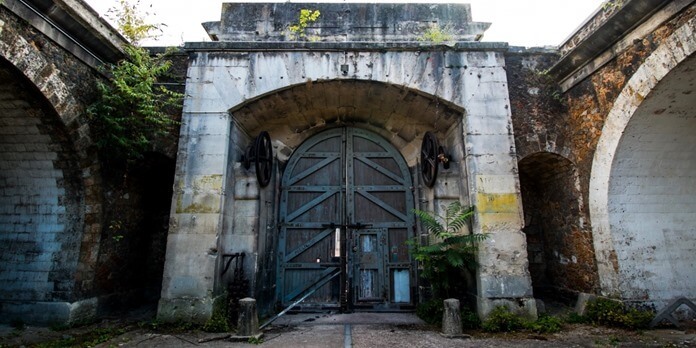 This area in the suburbs of Paris in the 30s of the last century served as a platform for the study of radioactive materials. On its territory there are 61 barrels with "fluorescent" materials, such as Cesium-137 and Radium-226.
This area in the suburbs of Paris in the 30s of the last century served as a platform for the study of radioactive materials. On its territory there are 61 barrels with "fluorescent" materials, such as Cesium-137 and Radium-226.
Measures to clean up Ford-d'Auberville from radioactive contamination began only in 1999, and the city authorities are planning to build new apartment buildings in the cleaned area.
1. Chernobyl exclusion zone, Ukraine
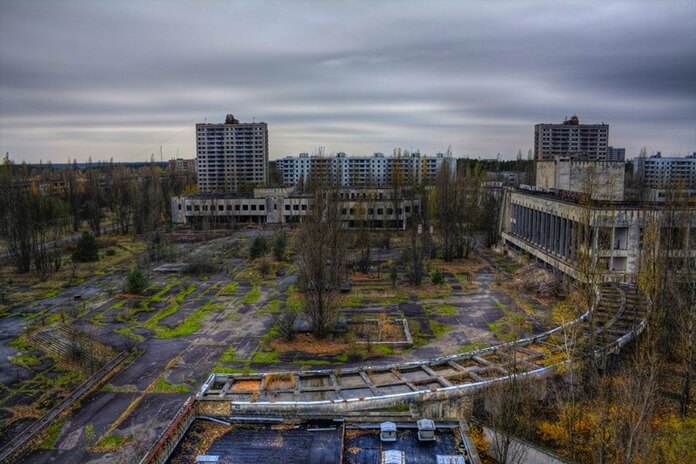 The cities of Chernobyl and Pripyat have long become a symbol of all the troubles that radiation brings with it. And interest in these scary and mysterious places is only fueled by eyewitness accounts, urban legends, books, films and TV series (such as the recently released Chernobyl TV series from HBO).
The cities of Chernobyl and Pripyat have long become a symbol of all the troubles that radiation brings with it. And interest in these scary and mysterious places is only fueled by eyewitness accounts, urban legends, books, films and TV series (such as the recently released Chernobyl TV series from HBO).
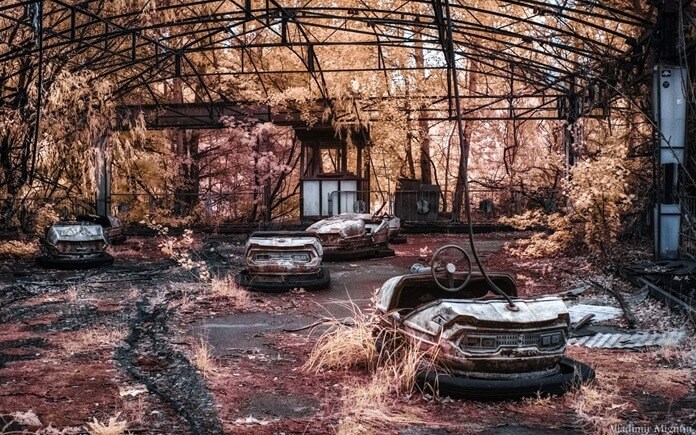 And where there is demand, there will be supply. And at present, a visit to the 30-kilometer Chernobyl exclusion zone is perhaps the most popular "radioactive" tourist destination in the world. The cost of the Chernobyl tour starts at $ 83 per person for citizens of another country and from $ 67 for Ukrainians.
And where there is demand, there will be supply. And at present, a visit to the 30-kilometer Chernobyl exclusion zone is perhaps the most popular "radioactive" tourist destination in the world. The cost of the Chernobyl tour starts at $ 83 per person for citizens of another country and from $ 67 for Ukrainians.
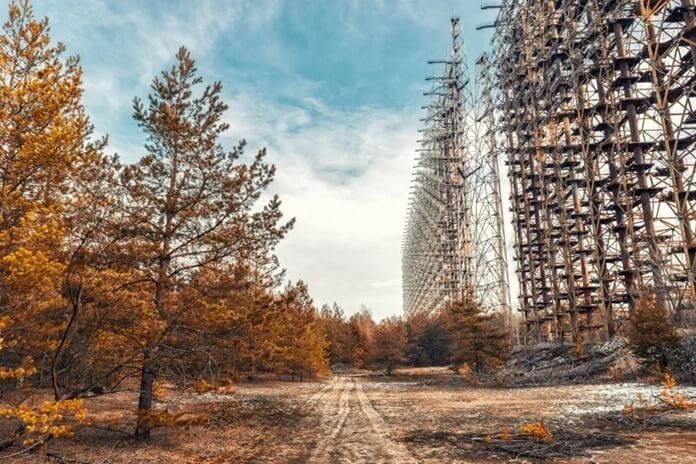 One of the most dangerous places of Chernobyl open to tourists is the control room of the Chernobyl nuclear power plant. The radiation level in it is 40 thousand times higher than the norm. Therefore, visitors to the control room wear chemical protection suits and special boots. You can stay inside the control room of the fourth power unit for no longer than five minutes.
One of the most dangerous places of Chernobyl open to tourists is the control room of the Chernobyl nuclear power plant. The radiation level in it is 40 thousand times higher than the norm. Therefore, visitors to the control room wear chemical protection suits and special boots. You can stay inside the control room of the fourth power unit for no longer than five minutes.

